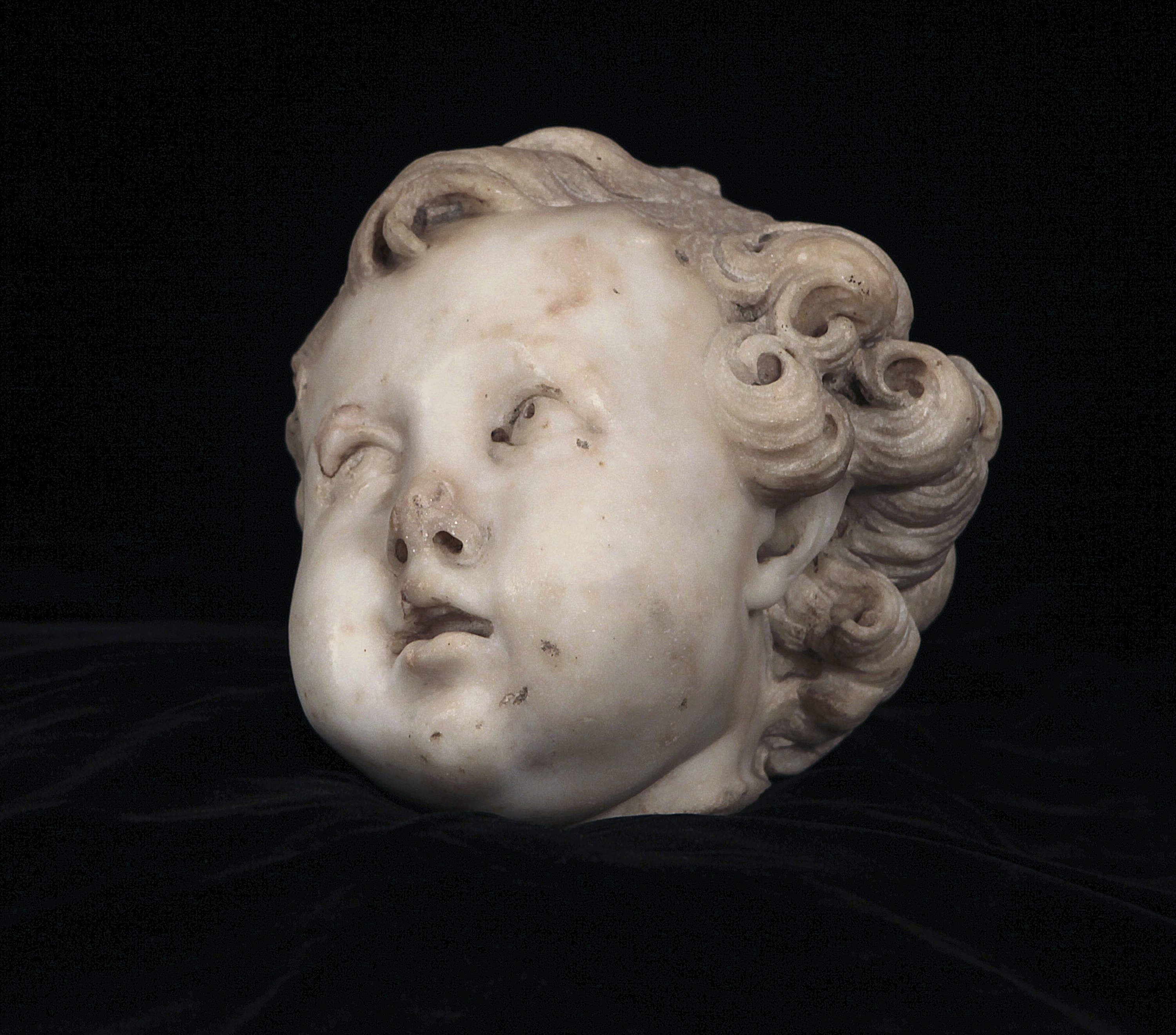Effigies : Head of a Cherub
Cherubim, high-ranking angels that guard heaven, are commonly depicted in Renaisssance artwork. The Cherubim often watch over the central characters of a sculpture, a stance that speaks to their guardian origins. Putti, on the other hand, are heavenly figures that are usually portrayed as winged infants. Almost always shown accompanying a notable figure as a sort of divine entourage, Putti have relatively little importance in and of themselves, but instead signify a heavenly blessing or celestial presence. The figures commonly referred to as Cherubim, as in this piece, are actually almost always Putti. This confusion of terms seems illogical, as true Cherubim are large, four headed creatures (one for each Gospel) with six giant wings wrapped around the body, a far cry from the innocent youthful figures of the Putti. Yet the merger between the form of a Putto and the name of a Cherub is not happenstance, but instead has its origin in the fact that, although their celestial duties are quite different, both Putti and Cherubim are portrayed in similar situations. Both serve to gaze upon the central scene of the work and identify the piece as holy. Additionally, because the Putti are more closely modeled on humanity, their presence in lieu of Cherubim provide a more natural setting and makes the heavenly glory and power portrayed in the piece appear more attainable and closer to reality.

